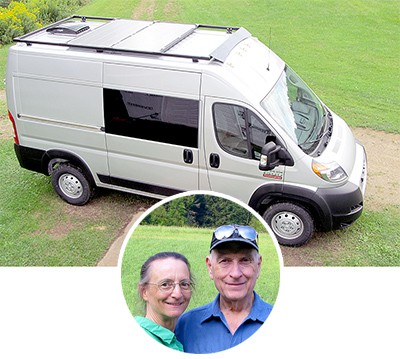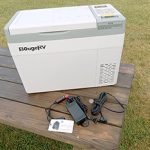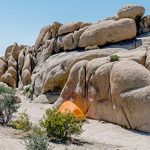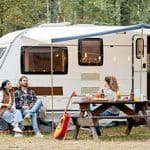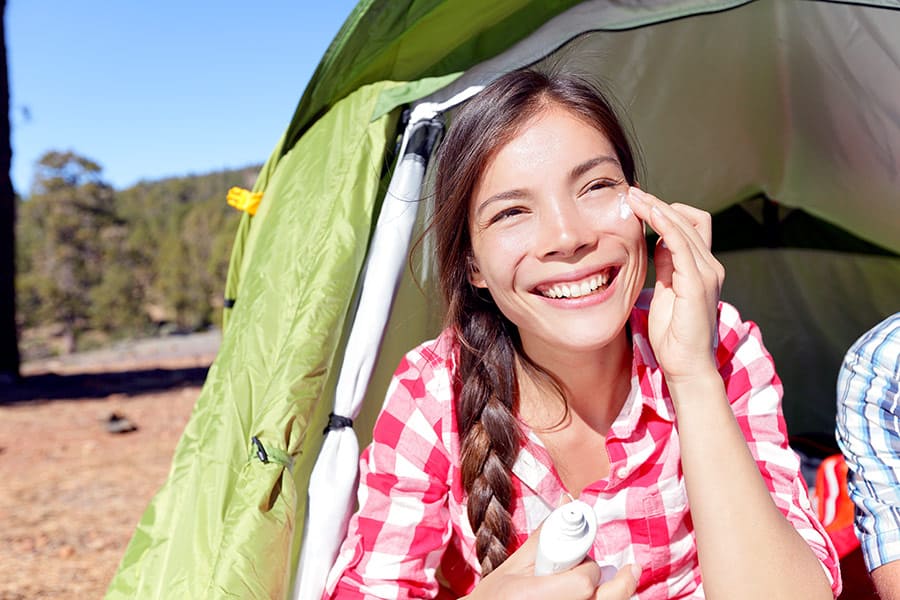
You may have considered your clothing, under a tree’s canopy, or your camping tent as ideal shade from the sun’s penetrating rays. Although you may feel the apparent effects of shade, have you ever wondered if any UV rays are seeping through and subtly burning you?
Can you get sunburn through a tent? Yes, if the tent is thin enough that you can see sunlight, you can get a sunburn while sitting in a tent. Even though some tents have a UV protectant applied to the fabric, over time, the protectant will break down, allowing more of the sun’s damaging rays to penetrate your tent.
Spending time camping during the warmer seasons of the year is a popular pastime for a large majority of the population. There is nothing to dampen the thrill of a camping trip more than getting a sunburn. It leads to many painful days of recovery, in addition to affecting your health in later years.
There are many conditions under which you could be burning yourself without realizing the long-term damage. Too much sun can cause premature aging, leathery skin, and increased risk for skin damage.
In this post, I will give you some ideas to help prevent the sun’s rays from coming through your tent, things to look for when shopping for a tent, and additional sun-protection steps you can take.
UVA and UVB – What You Need to Know
95% of the ultraviolet radiation from the sun that reaches the earth is UVA. UVA is present all year long, and that even includes the winter months. They can also penetrate the clouds on an overcast day, and it is present during all daylight hours.
UVA has a long wavelength and causes wrinkles, long term skin damage, and aging. You can feel ultraviolet radiation on you, but you can’t see it.
UVB is what turns you red and causes you to have a sunburn. UVB has a shorter wavelength and varies depending on what time of day it is, the season of the year and your location. The majority of UVB rays don’t penetrate glass, but they can cause skin damage by being reflected off of surfaces like snow.
UVB will be the strongest between 10 am and 4 pm, so it is wise to avoid being out during that time, and if you are going to be outside, be sure to wear protection.
UPF Rating – What is it?
Ultraviolet Protection Factor or UPF is the rating that is applied to textiles that tells you how much of the sun’s ultraviolet radiation will reach your skin through the fabric. The American Society for Testing and Materials (ASTM) sets standards for UPF labeling in the United States. The chart below will explain it a little more.
| Protection | UPF Rating | Blocked % of UV Radiation |
|---|---|---|
| Excellent | 40 to 50+ | 97.5 – 98+ |
| Very Good | 25 to 39 | 96.0 – 97.4 |
| Good | 15 to 24 | 93.3 – 95.9 |
To put that into perspective, fabric, or material with a UPF rating of 50, is going to allow 1/50th of the sun’s ultraviolet radiation, to reach your skin through the material. The rating takes into account both UVA and UVB when rating the textile’s performance.
Are There Any UPF 50+ Tent Options
Currently, many tent brands don’t offer you much protection from the sun. However, a few manufacturers are taking steps to increase the UV-resistant materials being used, hopefully causing more to be increasingly mindful in the future.
KingCamp has grown in leaps and bounds since its beginnings in 2002. They have become a force to be reckoned with in the outdoor recreation industry. From tents, shelters, sleeping bags, chairs, hammocks, cookware to backpacks, and more, there is hardly any area where you won’t find some of their products.
When researching this post, I was looking for tents that would provide the UPF 50+ protection that we were looking for, and I found that in the following KingCamp tents.
The KingCamp Instant Oversize Outdoor Beach Tent KT4082 has a UPF50+ rating and is perfect for a family camping outing whether it is backpacking or just plain old camping this tent will work perfectly for 3 to 4 people.
Setting this tent up is easy, and you can set it up or take it down in mere seconds. It weighs only 7.7 pounds, and when packed, it takes 29 x 5.5 x 5.5 inches of space. And you can even hang a lantern from the center of the tent to see what you are doing.
Next is the KingCamp CAMPKING Series Instant Camping Tent UPF50+ KT3097. It is big enough to sleep four people comfortably. It is a multi-purpose tent that also allows you to use it as a camping tent or a sun shelter. It is easy to set up and involves minimal set-up time.
The tent is well ventilated, and the floor and flysheet are water-proof and wear-resistant. When packed, it only takes up 41 x7.5 x7.5 inches of room. It comes with a zippered carrying pack, allowing you to take it on weekend outings easily. It weights 16 ½ pounds and is perfect for family camping.
Last on our list of KingCamp tents is the POSITANO Square Quick-Up UPF50+ Beach Tent KT3099. Again this tent is multi-purpose and is fast to erect and take down. It is roomy enough for four people. The tent weighs 9.3 pounds, and when packed up, it takes up 32 x7x7 inches of room. Also, this tent comes with a zippered carrying pack, making transportation a breeze.
All of the KingCamp tents are durable and will sit firmly on the ground, even in a brisk wind. All have inside pockets allowing you to store cell phones and other small items.
Other Posts of Interest:
- Do Tents Often Get Stolen at Campsites?
- Can You Pitch A Tent On Gravel?
- How to Choose the PERFECT Mattress for Camping in a Van
- What Is Frontcountry Camping?
How to Shop – Adapting Your Tent for The Sun
For now, no tent will be 100% resistant from UV rays. Whether you already own your tent, or you’re purchasing a new one, consider the following tips when purchasing or adapting your tent for optimal sun protection.
Read the Tag. Your tent should plainly tell you what its UPF rating is or if it possesses UV-reflecting capabilities.
Buy a darker tent. The darker material will help absorb more of the UV rays compared to a lighter colored tent, which allows the rays to pass more easily through.
Avoid Stretchy Materials. These leave excess room between the woven fibers of the fabric that allows more sun to creep through.
Avoid Bleached Cotton. UV rays easily penetrate thin fabrics like this.
Choose UV-Resistant Fabrics. Such as:
- Polyester
- Nylon
- Tightly woven
- Unbleached Cotton
- Canvas
- Fabrics treated with UV absorbers and dyes
Buy tents with thicker, heavier fabrics. Or add protective layers over your tent, such as:
- Rainfly
- A tarp
- A blanket
Also, when the fabric gets wet or stretched, it will lose some of its ability to protect from the sun’s rays.
What Can You Do to Protect Your Tent
So is there anything else that you can do to prevent getting sunburn through your tent? When using your tent, the material is exposed to the damaging effects of the sun. The fabric can start to deteriorate in just a couple of weeks of exposure.
Fabrics can lose up to half of their integrity in that short amount of time. As the fabric of your tent breaks down, the thinner the material becomes, and the more likely it would be for the sun’s damaging rays to penetrate the tent fabric.
Nikwax makes some products that will help your tent fabric to retain its protective qualities. The products available are Tent & Gear Solarwash, Tent & Gear SolarProof®, and Concentrated Tent & Gear Solarproof®. You can apply these products easily to your tent and gear, extending the life of your investment.
To learn more, watch the video below.
Summing it Up
Getting out in nature is a gratifying experience, and as with a lot of things in life, you have to be aware of the effects that can be detrimental. The sun’s rays are not only harmful to your body but also your tent and gear. When camping, be aware of how much time you are spending in the sun and do all the appropriate things you can to protect yourself from those damaging rays.


